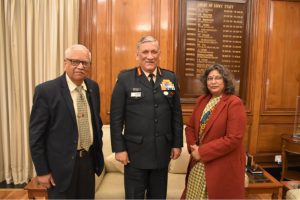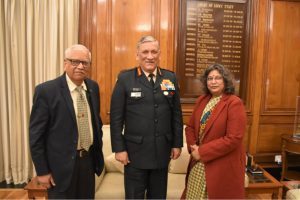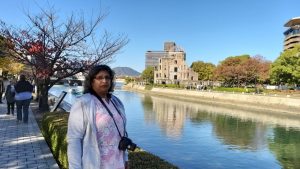
Dear Friends,
Of all the opportunities of travelling I got as a journalist and of all the battle tracking I did in my professional life, the one which is etched forever in my mind is the visit to Hiroshima in 2019 November. As a part of my covering the great battle fields of the two world wars, when I decided to go to Hiroshima, each and every reaction was – it is not a battle field. But for me this was the war arena were the final battle was fought, ironically which had only the aggressor because the enemy opposite was not a military force but the unknown population living in the town of Hiroshima.
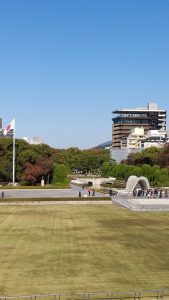
But very few know that the initial choice for the first bombing was Kyoto which was a large industrial city with a population of more than a million, the biggest cultural and intellectual center and the ancient capital of Japan. Aim of the Allied Forces was – One bomb, from one plane, would wipe a city off the map, should so horrible that it would end the war and create a permanent fear in the world towards the future use of nuclear bombs. The only point which went against it and gave Hiroshima place in world history was Kyoto had no significant military installations. About 25,000 troops were believed to have been stationed there at the time of the blast.
Hiroshima’s ground zero which was a buzzing with life commercial district of Nakajima on August 6, 1945, became the biggest disaster spot of the world when the B-29 Bomber Enola Gay US Air services now US Air Force dropped its payload, a 5-ton nuclear bomb nicknamed Little Boy and killed an estimated 80,000 people and turned the city into rubble.
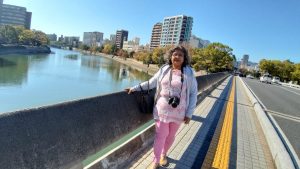
From the Hiroshima Airport to the hotel which was just across the peace bridge over Motoyasu river and it was a drive through scenic beauty with cherry blossom trees into a modern city with no reminders of the devastation which happened 75 years ago. Like any other Japanese city it has avenues of offices, showrooms, banks, restaurants and shops.
At 8:15 in the morning of August 6, 1945, the atom bomb named Little Boy incinerated Hiroshima. But the city rose like a phoenix from its ashes and decided to reconstruct itself as a state-of-the-art modern city in tranquillity. It decide to build a Peace Park at the hypocenter which is the location on the ground directly below the center of the explosion which was only a few hundred yards east of the bridge, which is now the peace bridge. Many monuments were decided to be built to mark the bombing and symbolize peace in the world. One of these monuments is Hiroshima Peace Flame dedicated to the victims of Hiroshima and has been burning continuously since it was lit in on August 1, 1964 .
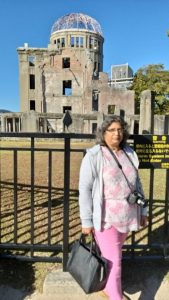
The A-Bomb Dome is the skeletal ruins of the former Hiroshima Prefectural Industrial Promotion Hall. It is the building closest to the hypocenter of the nuclear bomb that remained at least partially standing. It was left how it was after the bombing in memory of the casualties.The A-Bomb Dome is a symbol of peace which most people have at least seen at one time in a picture. The building, which was designed by a Czech architect in 1915, had been used as the Hiroshima Prefectural Industrial Promotion Hall. Hiroshima citizens back then loved so much European modern-style buildings of the time. In 1912, the National Confectionery Exposition was held in this place. From that exposition, Baumkuchen, which represented German cake, was manufactured and sold in Japan for the first time. Since the Hiroshima Prefectural Industrial Promotion Hall was located only around 160 meters from the hypocenter, the building was blown up, and all those inside the building died. However, the building was not destroyed completely because the blast of the atomic bomb, which was vaporized in the air, prevented it from totally collapsing. It was designated a UNESCO World Heritage Site in 1996 and has been representing people’s prayers for a lasting peace.
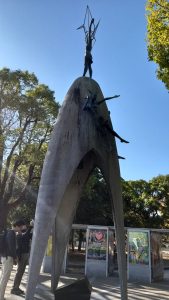
The Children’s Peace Monument is a statue dedicated to the memory of the children who died as a result of the bombing.The statue is of a girl with outstretched arms with a folded paper crane rising above her. The statue is based on the true story of Sadako Sasaki a young girl who died from radiation from the bomb. She is known for folding over 1,000 paper cranes in response to a Japanese legend.
The Rest House of Hiroshima Peace Park is another atomic bombed building in the park. The building was built as the Taishoya Kimono Shop in March 1929. It was used as a fuel distribution station when the shortage of fuel began in June 1944. On August 6, 1945, when the bomb exploded, the roof was crushed, the interior destroyed, and everything consumable burned except in the basement. Eventually, 36 people in the building died of the bombing; 47-year-old Eizo Nomura survived in the basement, which had a concrete roof through which radiation had a more difficult time penetrating.
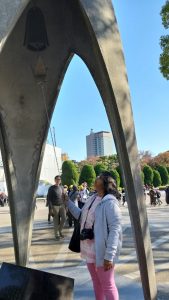
There are three Peace Bells in the Peace Park. The smaller one is used only for the Peace Memorial Ceremony. Except that day, it is displayed in the east building of Hiroshima Peace Memorial Museum. The more well-known Peace Bell stands near the Children’s Peace Monument and consists of a large Japanese bell hanging inside a small open-sided structure. Visitors are encouraged to ring the bell for world peace and the loud and melodious tolling of this bell rings out regularly throughout the Peace Park. The Peace Bell was built out in the open on September 20, 1964. The surface of the bell is a map of the world, and the “sweet spot” is an atomic symbol, designed by Masahiko Katori [1899–1988], cast by Oigo Bell Works, in Takaoka, Toyama. The inscriptions on the bell are in Greek (γνῶθι σεαυτόν), Japanese, and Sanskrit. It is translated as “Know yourself.” The Greek embassy donated the bell to the Peace Park and picked out the most appropriate ancient Greek philosophical quote of Socrates. The Sanskrit text is a quotation from Longer Sukhāvatīvyūha Sūtra which was attested by the Indian ambassador. The Japanese text was provided by a university lecturer.
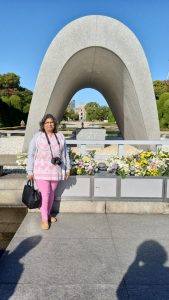
Near the center of the park is a concrete, saddle-shaped monument that covers a cenotaph holding the names of all of the people killed by the bomb. The monument is aligned to frame the Peace Flame and the A-Bomb Dome. The Memorial Cenotaph was one of the first memorial monuments built on open field on August 6, 1952. The arch shape represents a shelter for the souls of the victims. The cenotaph carries the epitaph which means “please rest in peace, for [we/they] shall not repeat the error.” The inscription on the front panel offers a prayer for the peaceful repose of the victims and a pledge on behalf of all humanity never to repeat the evil of war. It expresses the spirit of Hiroshima — enduring grief, transcending hatred, pursuing harmony and prosperity for all, and yearning for genuine, lasting world peace.
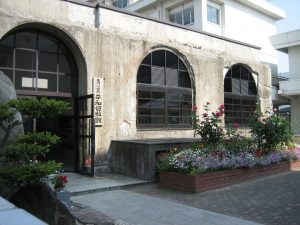
The Honkawa Elementary School was the closest school to ground zero of the Hiroshima bombing. They lost about 400 students and more than 10 teachers, and the building took great amounts of damage from the atomic bomb dropped. It now houses a Peace Museum operated by the Honkawa Elementary School PTA, as well as former members of the PTA, and is cleaned and maintained by the students. The new school building was built and part of the old building was opened as the Peace Museum in April 1988. A memorial for the atomic bomb victims was built in November 1998.
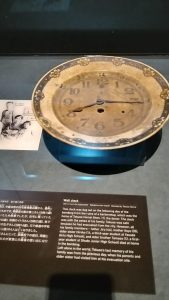
The Hiroshima Peace Memorial Museum is a museum located in Hiroshima Peace Memorial established in August 1955 with the Hiroshima Peace Memorial Hall , now the International Conference Center Hiroshima . The Peace Memorial Museum collects and displays belongings left by the victims, photos, and other materials that convey the horror of that event, supplemented by exhibits that describe Hiroshima before and after the bombings and others that present the current status of the nuclear age. Each of the items displayed embodies the grief, anger, or pain of real people.
Hiroshima is a city of peace virtually. Peace Boulevard, a 4km-long avenue lined with trees and stone lanterns, Peace Memorial Park, Gates of Peace, a series of 9m-high glass arches with the word ‘peace’ inscribed in 49 languages and the most surprising were bicycles running on motor called ‘peacecles’.
It was the most agonising battle track I have done in my career as a defence journalist seeing the remnants of the horrific blast. But Hiroshima of today is the most motivating too. The city inspires and infuses positivity. It teaches you to never assume that the end is final – the end is always a new beginning.
Sangeeta Saxena
06 August 2022


































